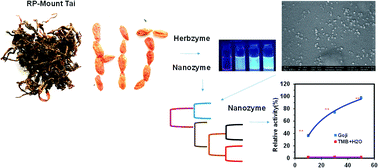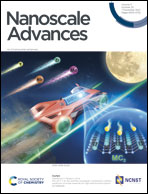Nano-evolution and protein-based enzymatic evolution predicts novel types of natural product nanozymes of traditional Chinese medicine: cases of herbzymes of Taishan-Huangjing (Rhizoma polygonati) and Goji (Lycium chinense)†
Abstract
Nanozymes and natural product-derived herbzymes have been identified in different types of enzymes simulating the natural protein-based enzyme function. How to explore and predict enzyme types of novel nanozymes when synthesized remains elusive. An informed analysis might be useful for the prediction. Here, we applied a protein-evolution analysis method to predict novel types of enzymes with experimental validation. First, reported nanozymes were analyzed by chemical classification and nano-evolution. We found that nanozymes are predominantly classified as protein-based EC1 oxidoreductase. In comparison, we analyzed the evolution of protein-based natural enzymes by a phylogenetic tree and the most conserved enzymes were found to be peroxidase and lyase. Therefore, the natural products of Rhizoma polygonati and Goji herbs were analyzed to explore and test the potent new types of natural nanozymes/herbzymes using the simplicity simulation of natural protein enzyme evolution as they contain these conserved enzyme types. The experimental validation showed that the natural products from the total extract of nanoscale traditional Chinese medicine Huangjing (RP, Rhizoma polygonati) from Mount-Tai (Taishan) exhibit fructose-bisphosphate aldolase of lyase while nanoscale Goji (Lycium chinense) extract exhibits peroxidase activities. Thus, the bioinformatics analysis would provide an additional tool for the virtual discovery of natural product nanozymes.



 Please wait while we load your content...
Please wait while we load your content...